Mechanical Engineering Resume, Cover Letter, Portfolio Suggestions
Everyone has a million resume suggestions, take all of them with a grain of salt. That being said, here are ours:
Our Favorite Products
Resume:
Rules
No colors. People print out your resume and odds are it will be in the black in white. No reds, blues are a stretch
No small font - glasses should not be required to read your resume
One page with some margins
No first-person - aka eliminate all “I”s and “we”s
Have at least two other people read for grammar and spelling before sending out
The format has to be the same in all sections
You need to put your GPA and year of graduation on it
Structure
School first - this is your credibility
If you don’t have a lot of professional experience, skills second - put your CAD programs and software languages up front so they can be seen immediately. Do not put Microsoft Office
If you have good professional or club experience you can put that second
High school stuff is fine for freshman year, but seeing it on your resume should be motivation to do more things so you can get rid of it
Have a projects section. It is great for interviews
Suggestions
Don’t be afraid to be creative with formatting as a freshman or sophomore. Odds are your experience won’t be your strongest point just yet, so maybe use your design to earn the second glance. You have nothing to lose (as long as you follow the rules)
Two columns can be risky, but if executed well can allow you to fill space
Have a line or two towards the end that is fun; list hobbies, favorite TV shows, sports teams etc. This adds some personality and is a shot in the dark to have something in common with whoever is reading it
Don’t get too carried away with bolding, underlines, italics, and bullets
Keep revisions of your resume. Make a new document every time you update it significantly. It can be helpful to look back at how your resume has changed over time
Sometimes putting that you are going to theoretically graduate one semester early can help beat auto-filters if you are a freshman or sophomore.
Resume Progression
We thought it would be helpful to see the progression of our resumes over the last 4 years!
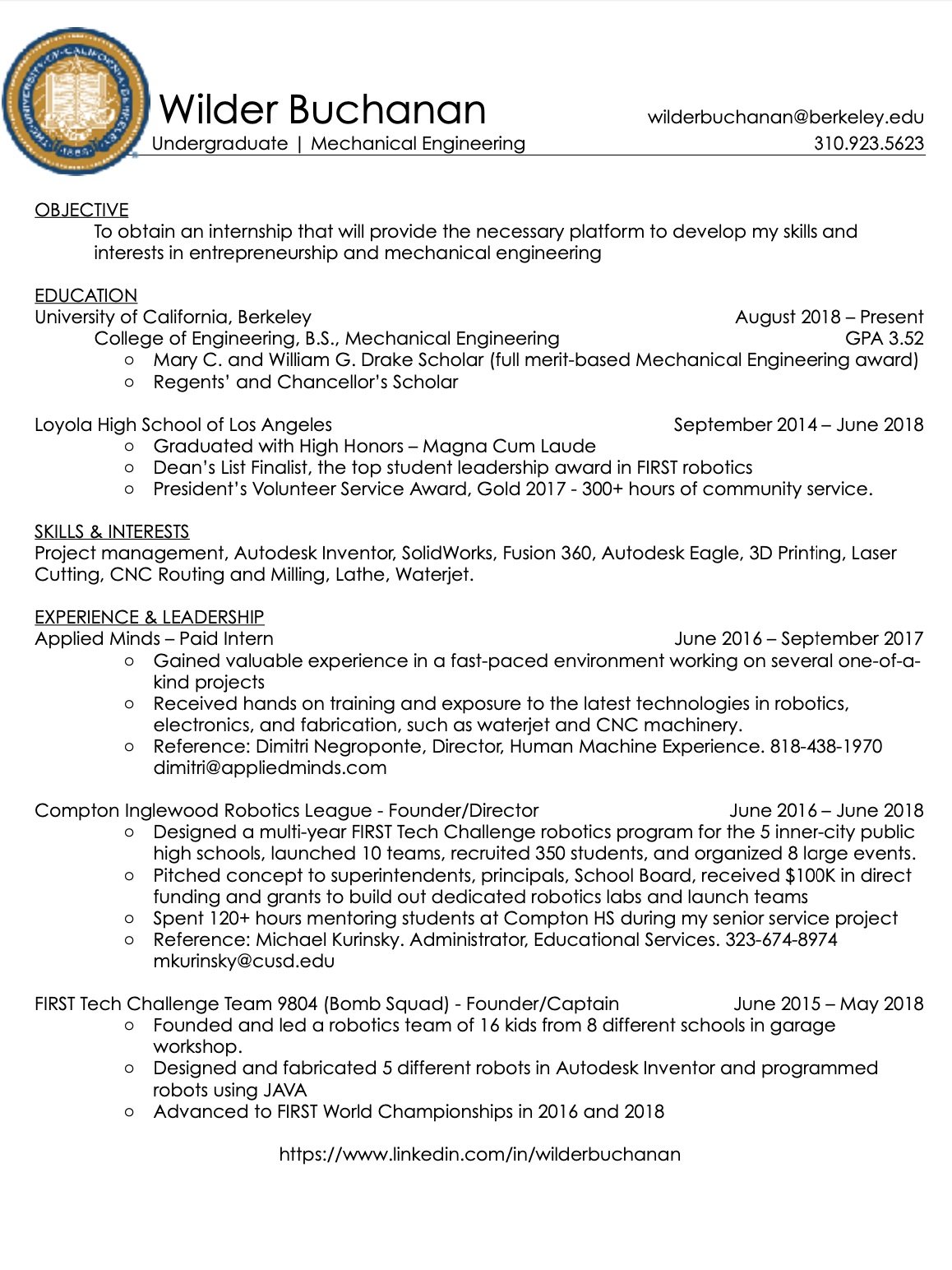
Freshman Fall
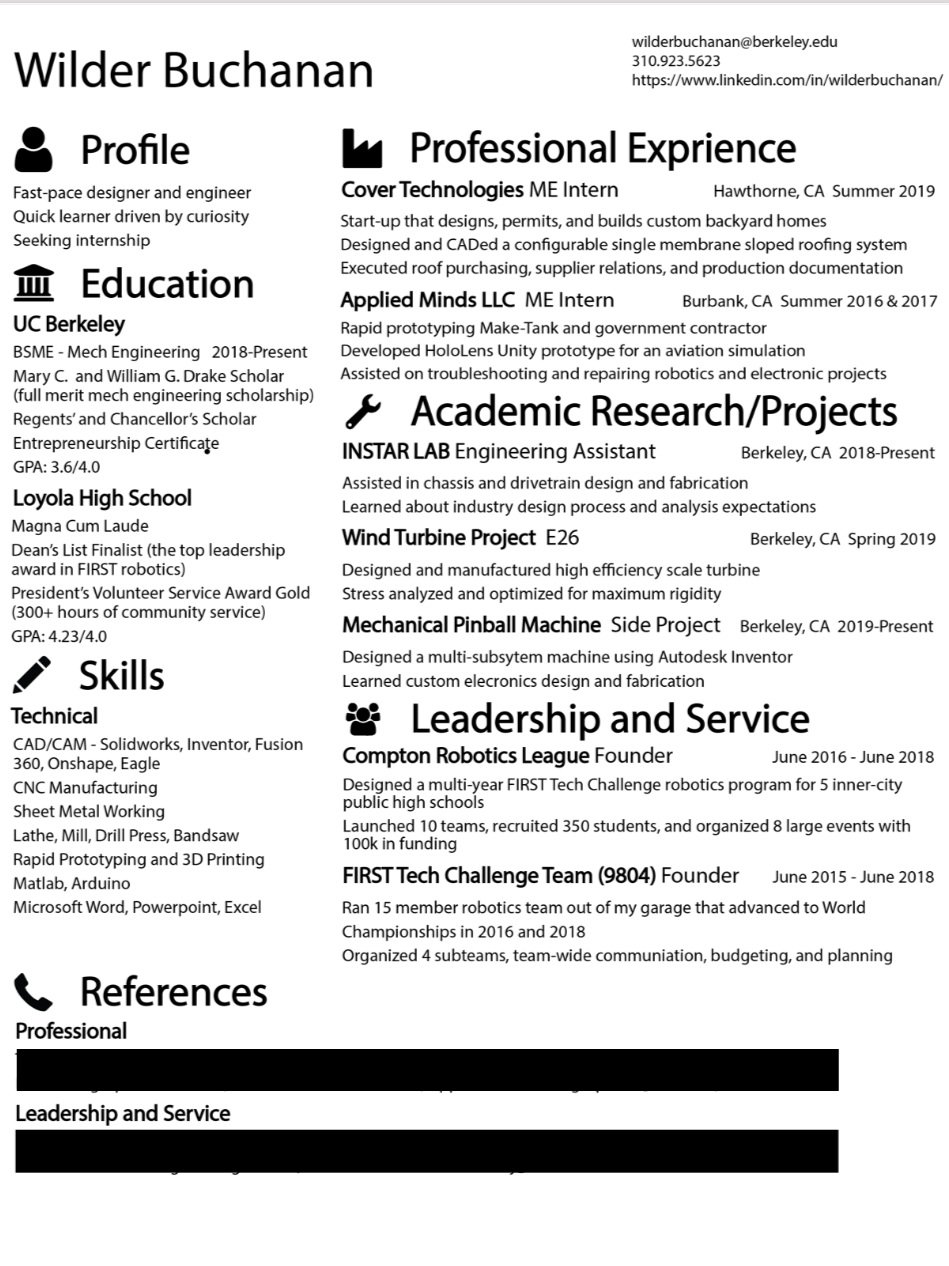
Sophomore Fall
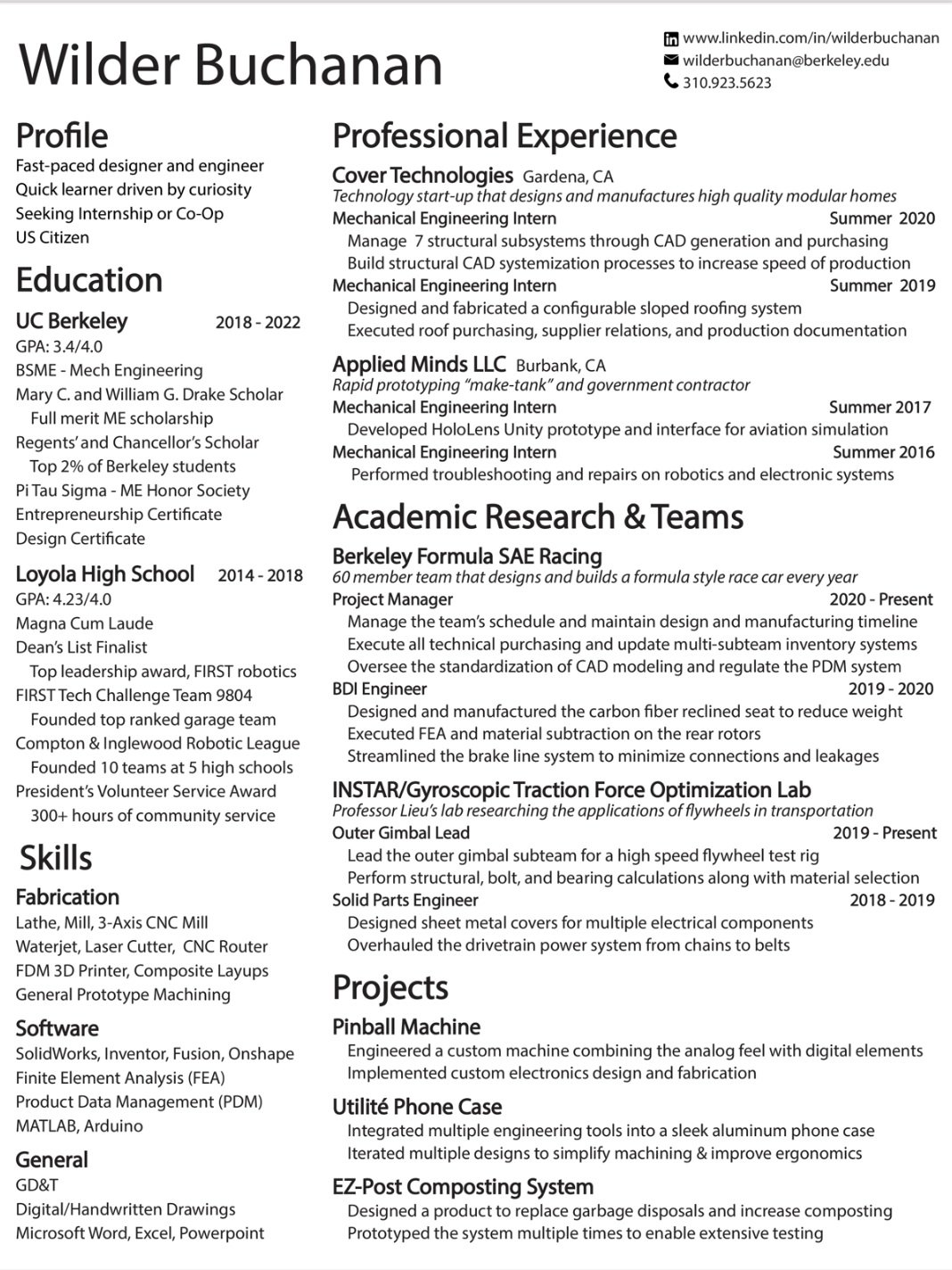
Gap Year
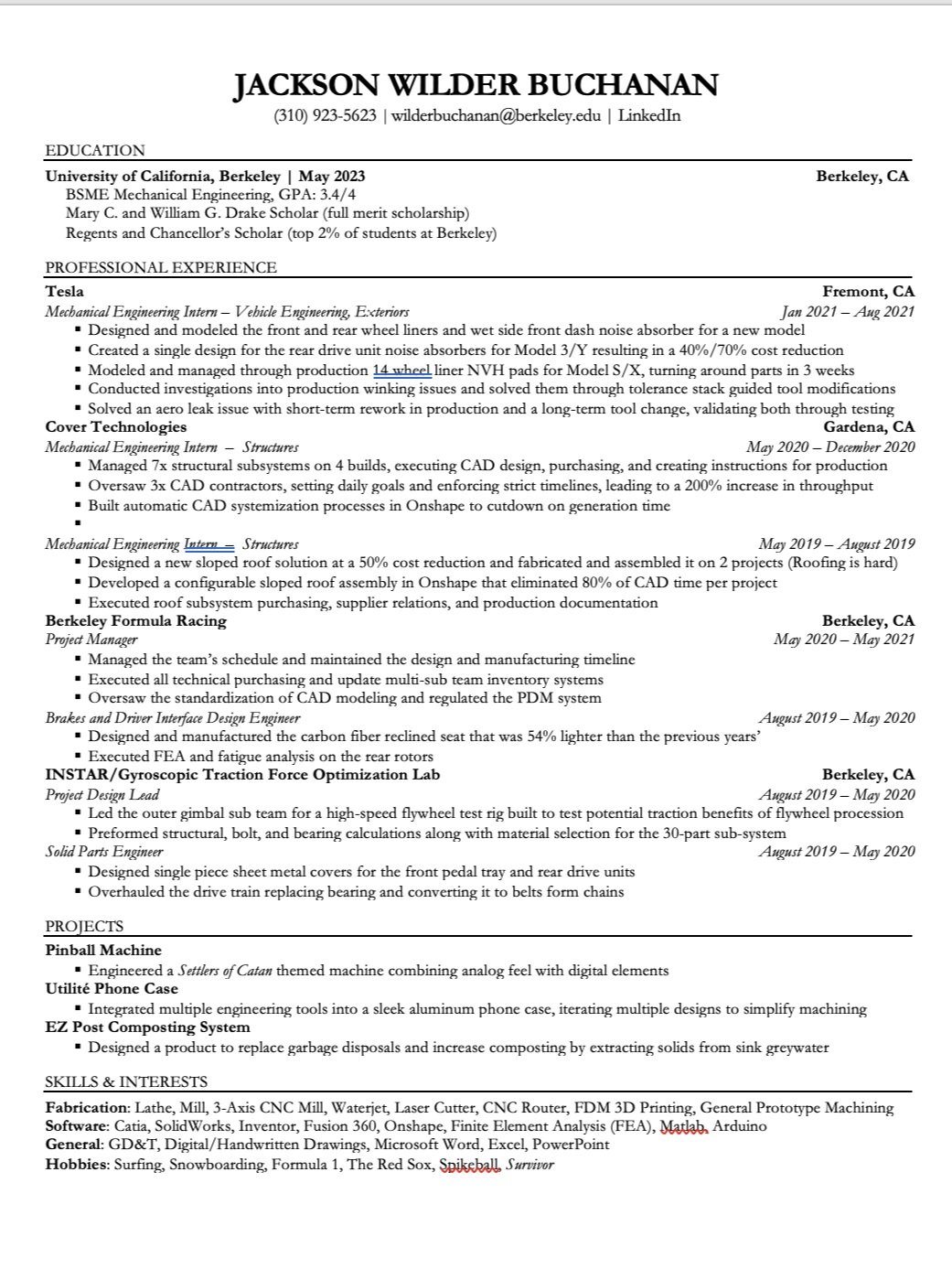
Junior Fall
A Favorite Company Of Ours
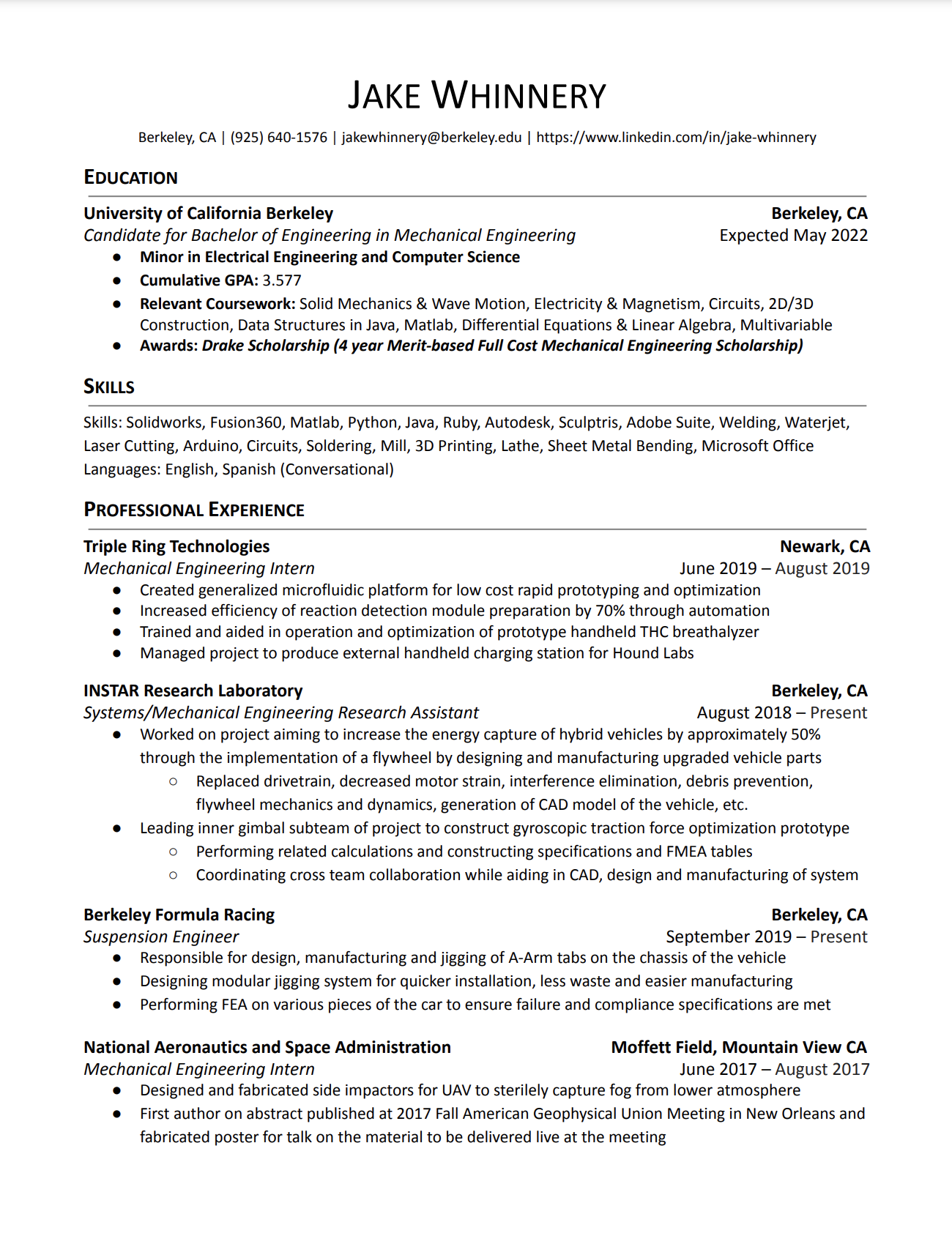
Freshman Fall
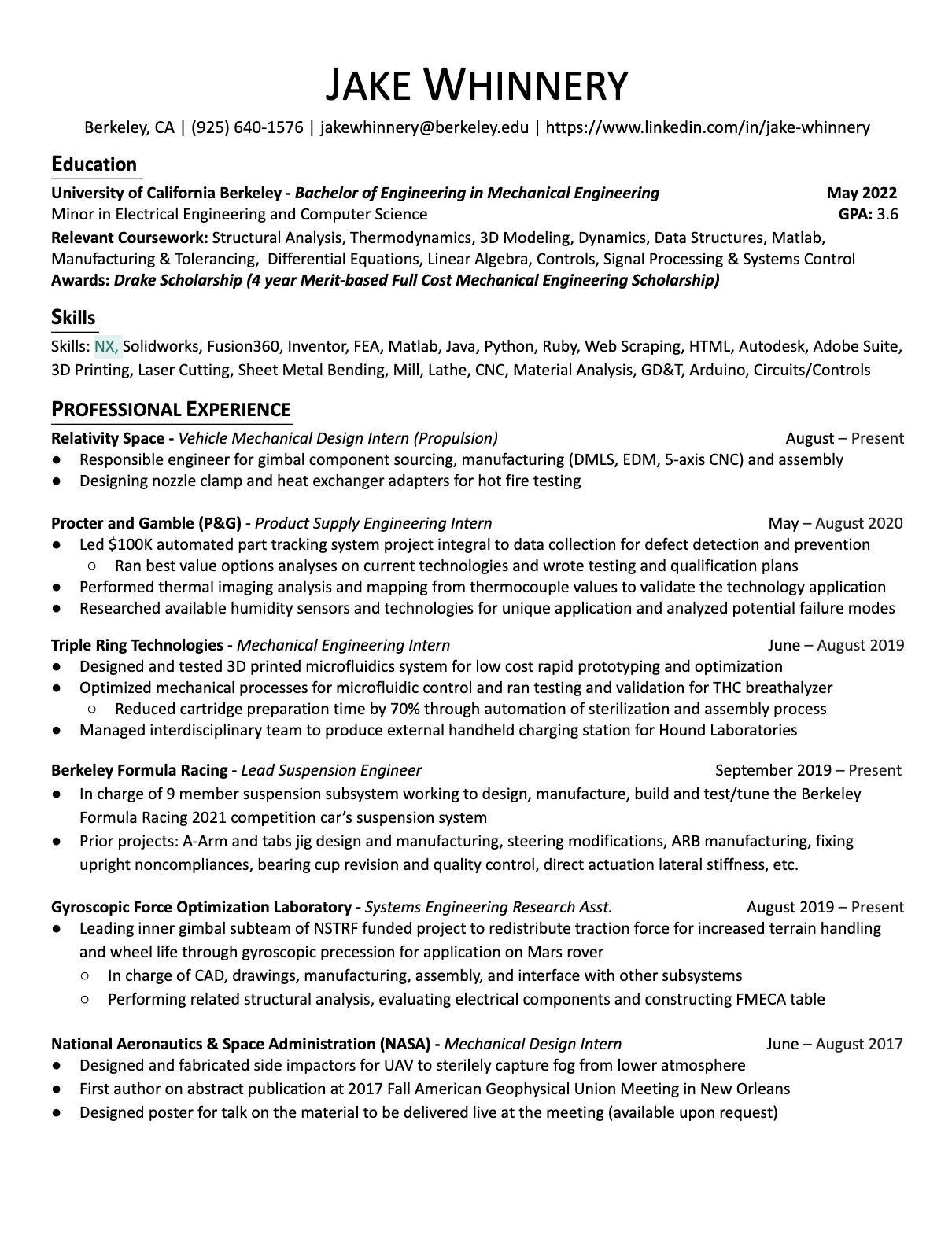
Sophomore Fall
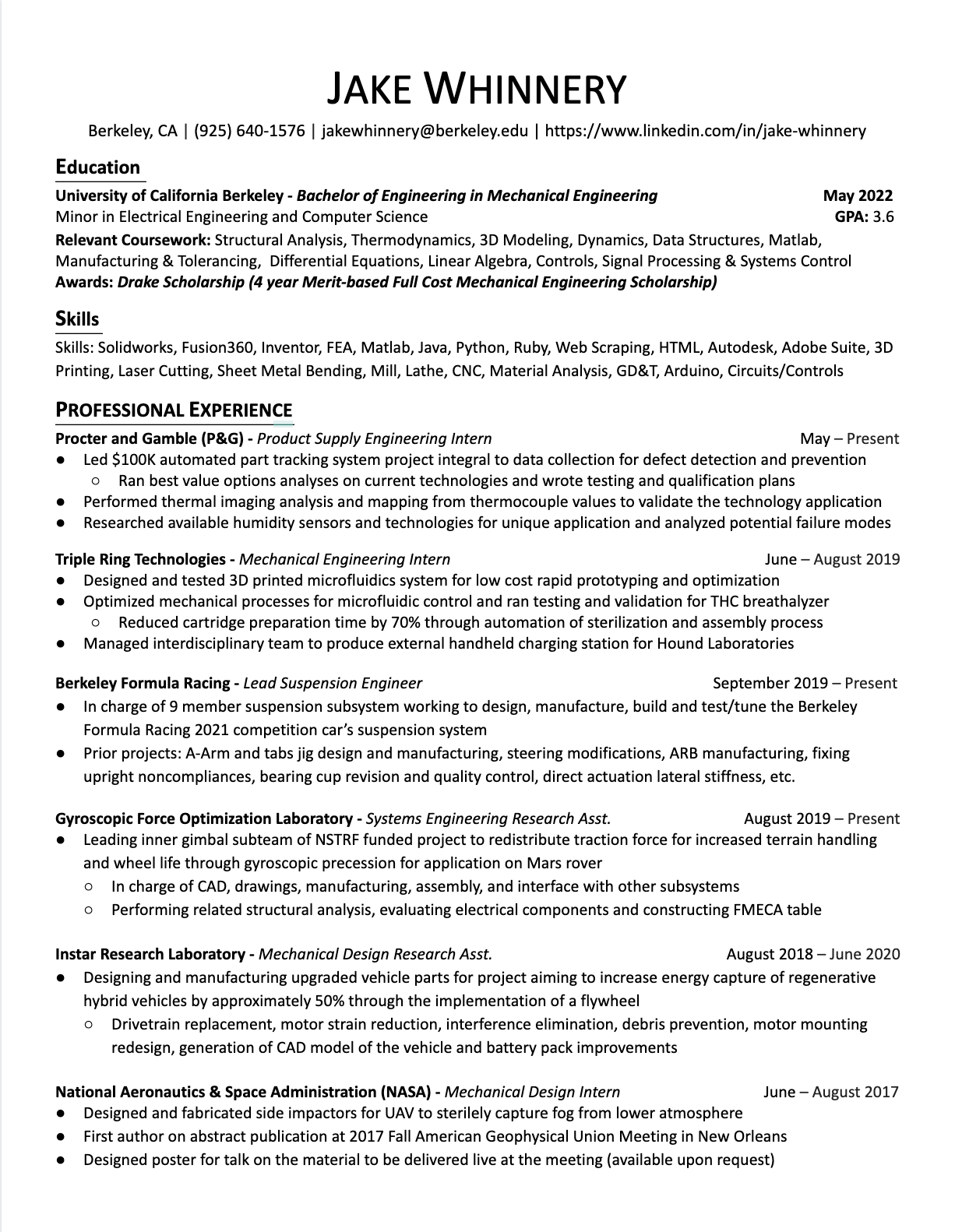
Gap Year
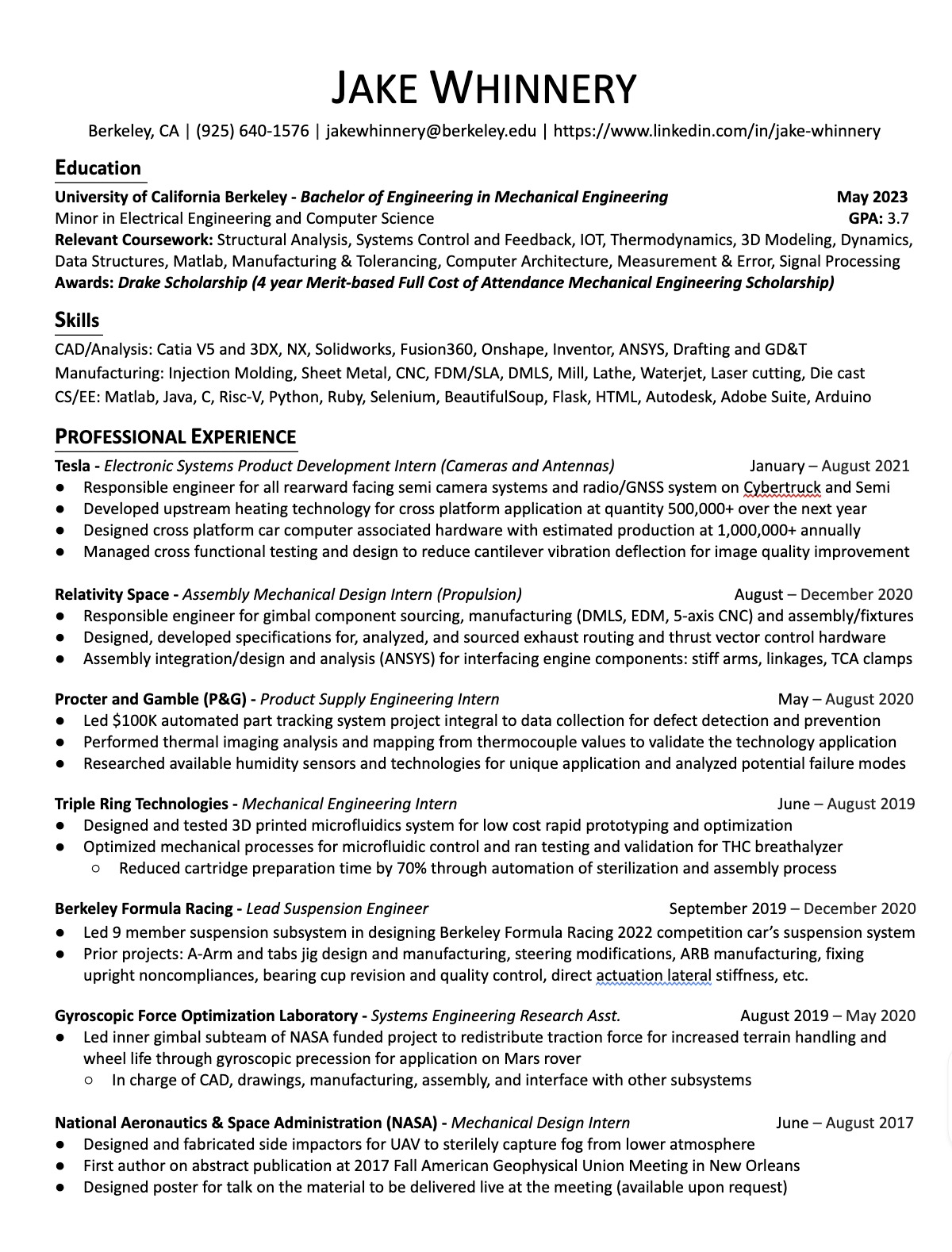
Junior Fall
Cover Letter:
You don’t need one.
You are an engineer. Showing is better than telling. Spend the time you would put into a cover letter on your portfolio.
Portfolio:
A solid portfolio is essential for juniors and seniors recruiting for top companies. It illustrates that you know how to take a project from start to finish and get results. It confirms you can make stuff. It will differentiate you. It is also your lifeline during technical interviews. Any tough technical question is 10 times easier to answer when it is asked in the context of a project you worked on. You can use your portfolio to anchor tough questions and keep the conversation on actual things you have worked on rather than theoretical engineering concepts and situations.
Check out our Portfolio Database
Suggestions
For every single project you work on, no matter the scale, you should take a million pictures of all parts of the process. Screenshot CAD. Snap photos of failure, mockups, sketches, everything Pictures are so so so valuable.
You may not have enough to make a portfolio after your first year of school, that is fine, but make sure to have pictures so when you do make one, you aren’t doing the whole project over again.
It is very easy to lose many days to formatting. It matters, but good pictures, screenshots, and drawings can make up for bad formatting.
Make it a slide deck first.
Then once you have the content, a website can make sense. The nice thing about a website is that you can edit and add content over time and the link is still the same.
I used Squarespace. It’s drag and drop, and costs $168 a year (before coupons, of which there are numerous).
There are no real rules for portfolios. Have fun with it!


